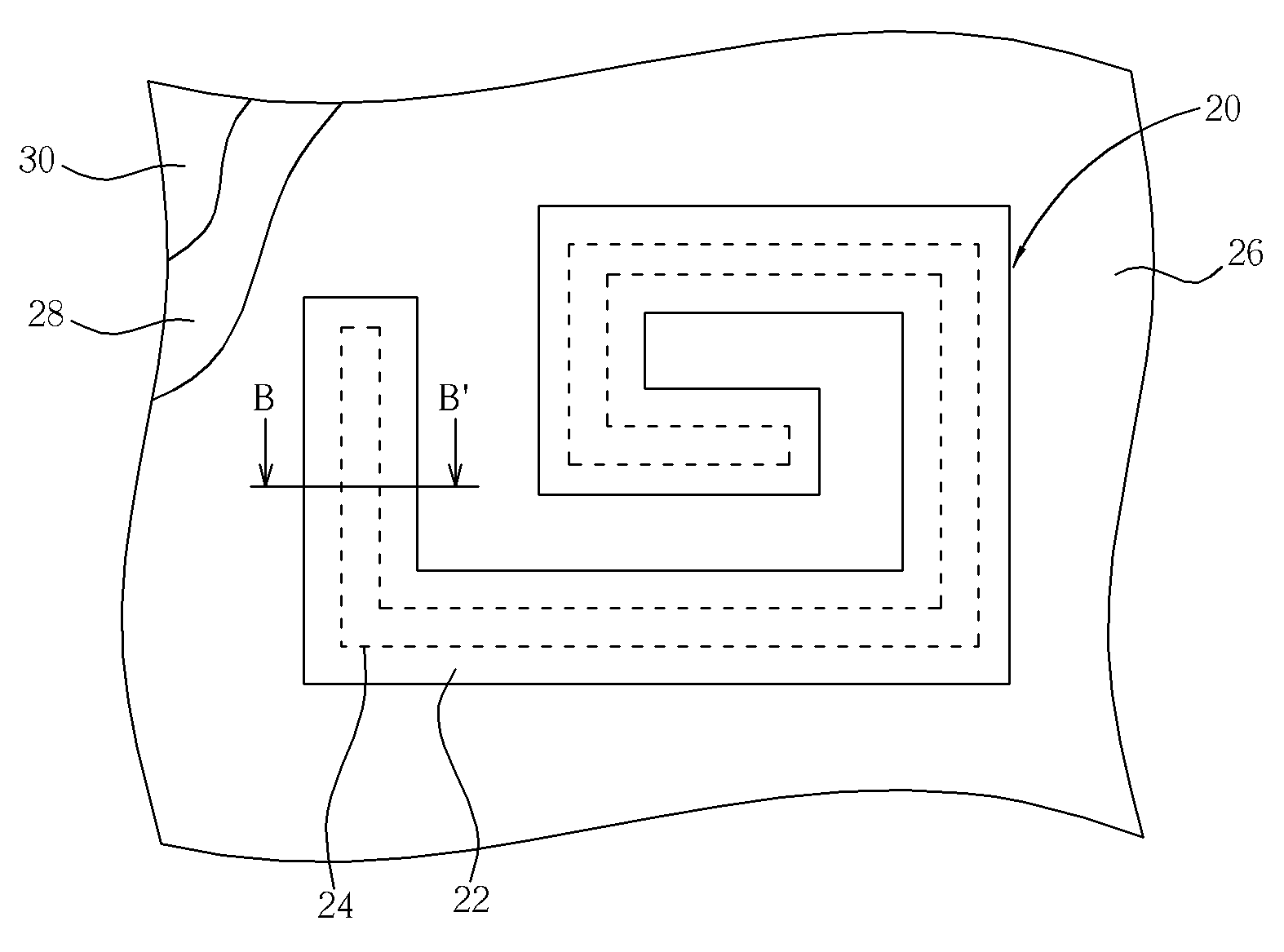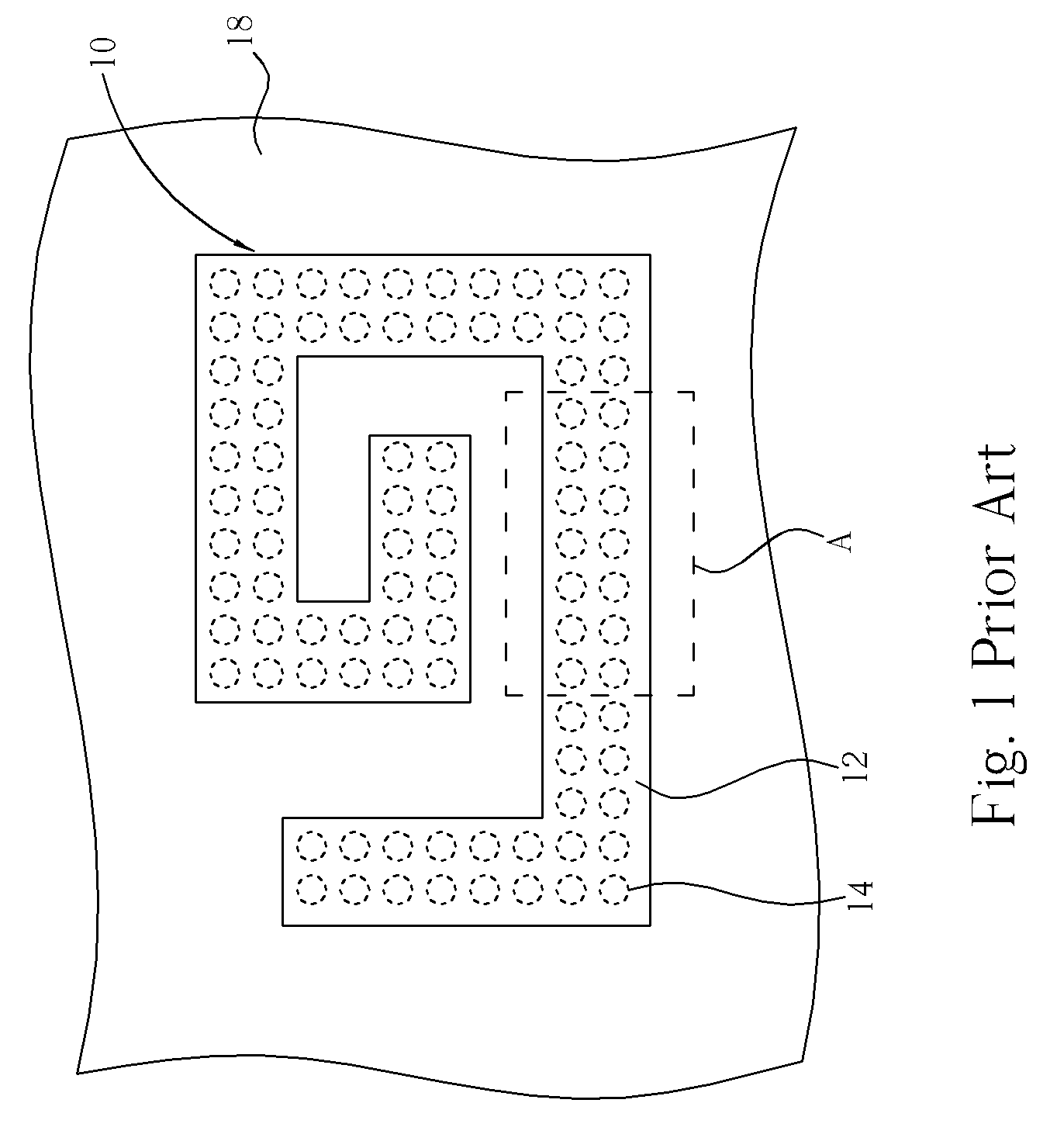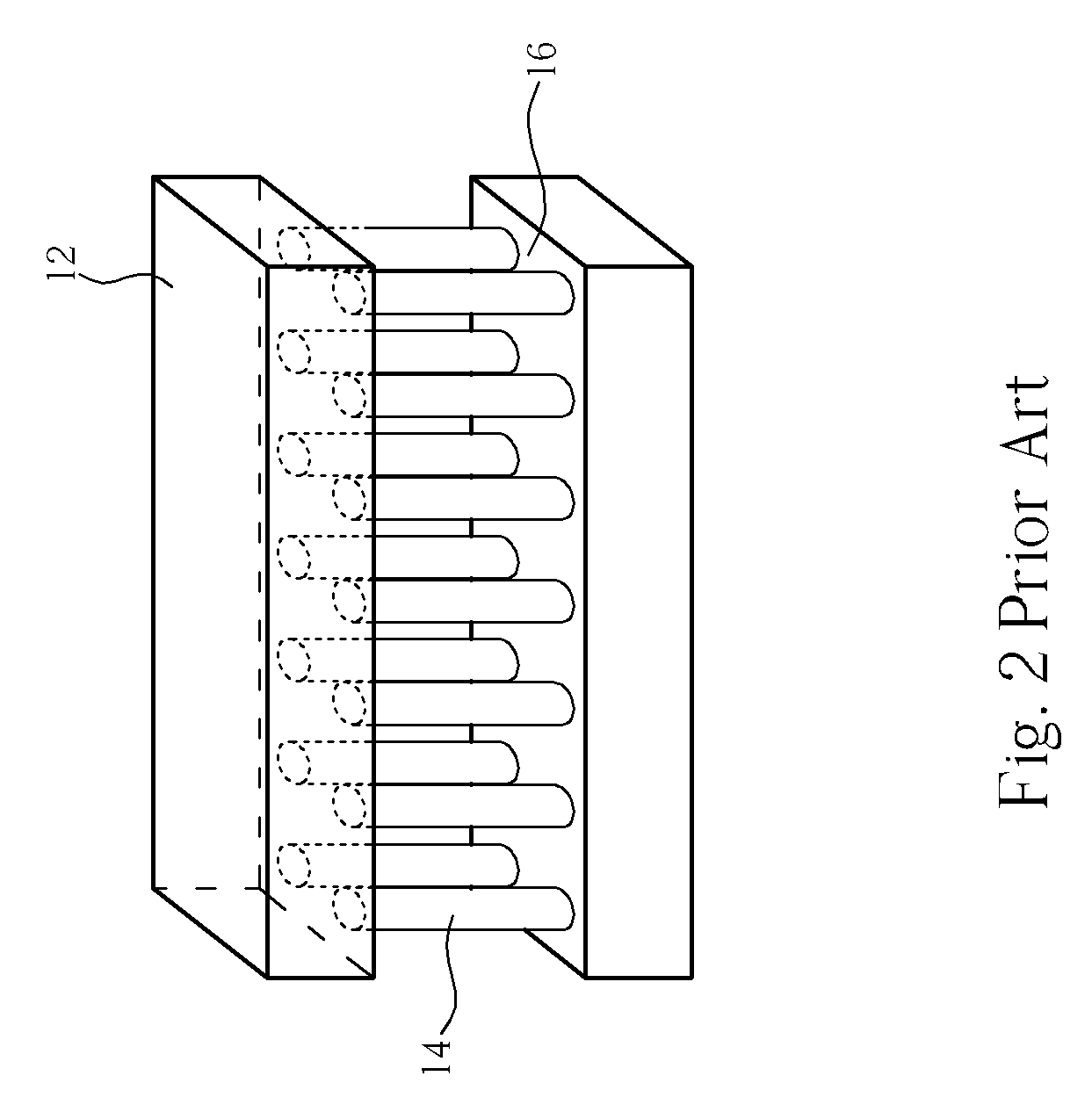Inductor structure
a technology of inductor and structure, applied in the direction of basic electric elements, solid-state devices, inductance, etc., can solve the problems of affecting the electric properties of the inductor, prone to collapse, etc., and achieve the effects of reducing resistance, increasing cross-sectional area of the conductive layer of the coil, and increasing q factor
- Summary
- Abstract
- Description
- Claims
- Application Information
AI Technical Summary
Benefits of technology
Problems solved by technology
Method used
Image
Examples
first embodiment
[0029]Please refer to FIGS. 3-5. FIG. 3 shows a schematically plan view of the first embodiment according to the present invention. FIG. 4 shows a schematically cross-sectional view along line B-B′ in FIG. 3. FIG. 5 shows a schematically partial perspective view of the conductor structure shown in FIG. 3. The inductor structure 20 is located in a semiconductor substrate 30. The semiconductor substrate 30 comprises a topmost interconnect (not shown) in a first dielectric layer 26, a second dielectric layer 28 under the first dielectric layer, and at least one via (not shown) in the second dielectric layer and filled with a via plug (not shown) connecting the topmost interconnect. The inductor structure 20 comprises a first conductive layer 22 and a second conductive layer 24. The first conductive layer 22 is in a spiral shape, disposed in the first dielectric layer 26, and comprises a same material as the topmost interconnect. The second conductive layer 24 is filled in a trench open...
second embodiment
[0037]Please refer to FIG. 6 showing a cross-sectional view of the second embodiment according to the present invention. The inductor structure 31 is located in a semiconductor substrate 30. The semiconductor substrate 30 comprises a topmost interconnect (not shown) in a first dielectric layer 26, a second dielectric layer 28 under the first dielectric layer, and at least one via (not shown) in the second dielectric layer and filled with a via plug (not shown) connecting the topmost interconnect. The inductor structure 31 comprises a first conductive layer 32 and two second conductive layers 34a and 34b. The first conductive layer 32 is in a spiral shape, disposed in the first dielectric layer 26, and comprises a same material as the topmost interconnect. The second conductive layers 34a and 34b are respectively filled in two trench openings in the second dielectric layer 28 beneath the first conductive layer 32 and connect the bottom of the first conductive layer 22 with their tops...
third embodiment
[0039]Please refer to FIG. 7, showing a cross-sectional view of the third embodiment according to the present invention. The inductor structure 40 is located in a semiconductor substrate 30. The semiconductor substrate 30 is as described above. The inductor structure 40 comprises a first conductive layer 42 and a second conductive layer 44. The first conductive layer 42 is in a spiral shape, disposed in the first dielectric layer 26, and comprises a same material as the topmost interconnect. The second conductive layer 44 is filled in a trench opening in the second dielectric layer 28 beneath the first conductive layer 42 and connects the bottom of the first conductive layer 42 with its top. The second conductive layer 44 has a same shape as the spiral shape which the first conductive layer 42 has and comprises a same material as the via plug.
PUM
| Property | Measurement | Unit |
|---|---|---|
| thickness | aaaaa | aaaaa |
| width | aaaaa | aaaaa |
| width | aaaaa | aaaaa |
Abstract
Description
Claims
Application Information
 Login to View More
Login to View More - R&D
- Intellectual Property
- Life Sciences
- Materials
- Tech Scout
- Unparalleled Data Quality
- Higher Quality Content
- 60% Fewer Hallucinations
Browse by: Latest US Patents, China's latest patents, Technical Efficacy Thesaurus, Application Domain, Technology Topic, Popular Technical Reports.
© 2025 PatSnap. All rights reserved.Legal|Privacy policy|Modern Slavery Act Transparency Statement|Sitemap|About US| Contact US: help@patsnap.com



